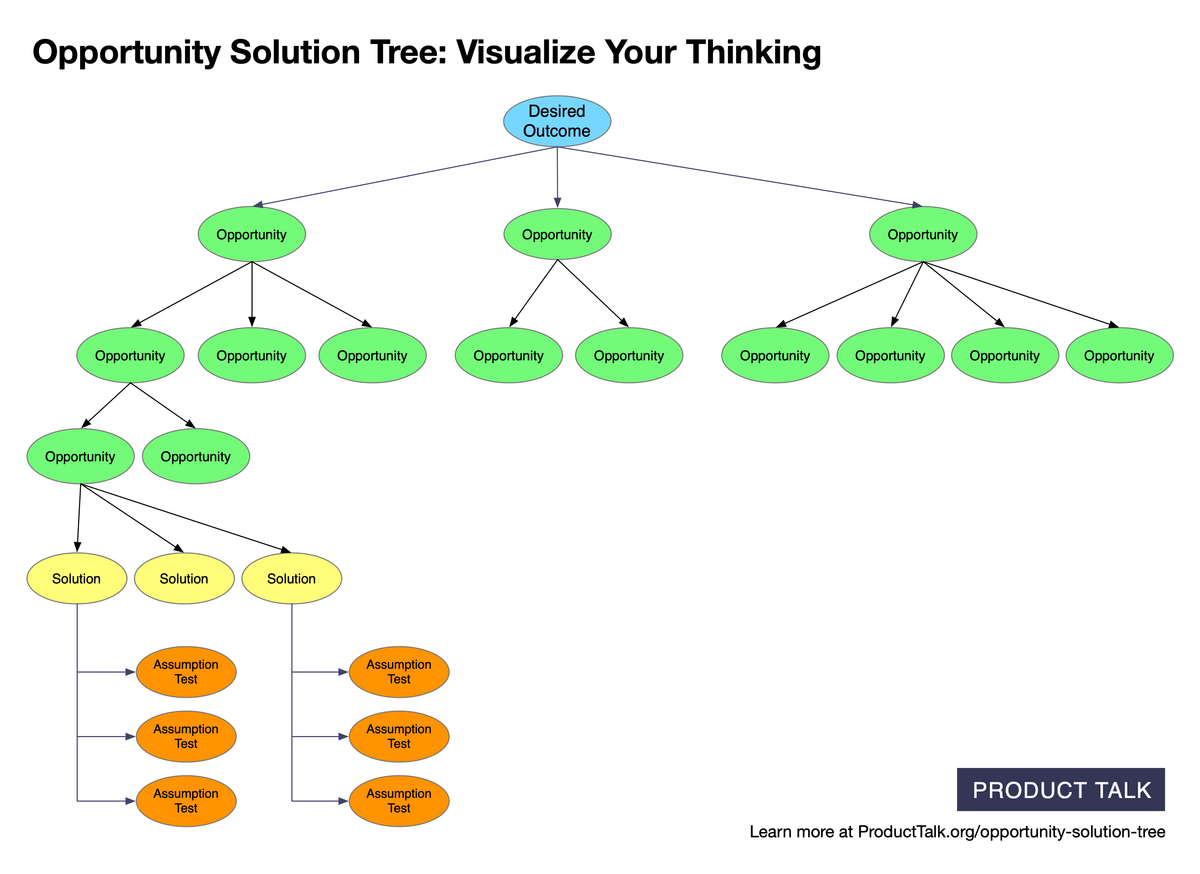Opportunity Mapping

What is opportunity mapping?
Opportunity mapping is the critical activity of taking inventory of and giving structure to the opportunity space by using an opportunity solution tree to visualize customer needs, pain points, and desires.
Why does structure matter in opportunity mapping?
Finding the best path to your desired outcome is an ill-structured problem. It requires that teams first structure or frame the problem space before diving into solving it. Mapping the opportunity space is how teams give structure to this ill-structured problem.
A single customer story might elicit dozens of opportunities. If you interview continuously, your opportunity space will always be evolving—expanding as you learn about new needs, contracting as you address known problems, and gaining clarity as you learn more.
How do tree structures differ from flat backlogs?
Rather than managing opportunities in a flat backlog, teams use the tree structure to depict two key relationships:
Parent-child relationships — Where a child opportunity is a subset of a parent opportunity
Sibling relationships — Similar opportunities that are each a subset of the same parent but distinct from each other
How does opportunity mapping help teams decompose complex problems?
When teams learn to think in tree structures, it helps them decompose large, intractable problems into smaller, more solvable problems. This allows teams to deliver value iteratively over time rather than waiting until they can solve the bigger problem all at once.
Learn more:
- Opportunity Mapping: An Essential Skill for Driving Product Outcomes
Related terms:
- Opportunity Solution Tree
- Opportunity
- Desired Outcome
- Target Opportunity
Last Updated: October 25, 2025
